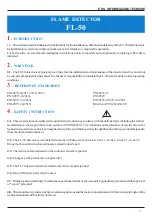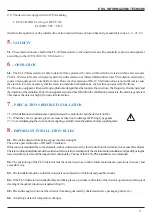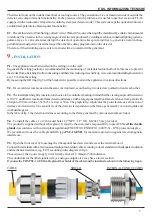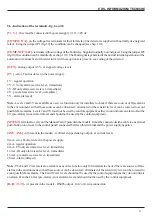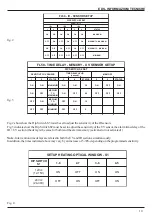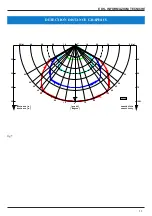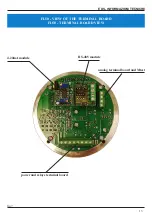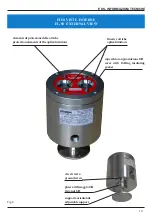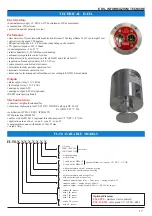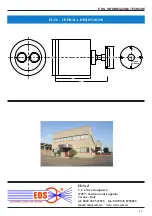
EDS - INFORMAZIONI TECNICHE
4
4.9 - The detector is equipped with ATEX marking
CE 0722 II 2GD Ex db op is IIC T6 Gb
Ex tb IIIC T85 ° C Db
therefore the appliance can be installed in environments with an explosion hazard (gas and dust) zones: 1 - 2 - 21 - 22
5
-
VALIDITY
5.1
- These instructions are valid for the FL-50 flame detector, when used in areas with potentially explosive atmospheres
according to the ATEX 2014/34 / UE directive
6
-
OPERATION
6.1
- The FL-50 flame detector is able to detect a flame produced by a fire within its field of vision within a few seconds.
The FL-50 detector reacts with great sensitivity to the emission of infrared IR and ultraviolet UV radiation emitted by a
source of adequate power in its field of vision. However, the emission of IR or UV radiation alone is not sufficient to cause
the alarm. It is in fact necessary that the emission includes both radiations, such as those produced by the flame.
FL-50 is also equipped with special and sophisticated algorithms that analyze the spectrum, the frequency, the intensity and
the duration of the radiation. Only when signals are present that fall within the calibration parameters, the alarm is generated.
This makes the detector highly immune to false alarms.
7
-
PRECAUTIONS BEFORE INSTALLATION
7.1 - All installation and maintenance operations must be carried out when the device is not live
7.2 - When the cover is opened, great care must be taken not to damage the O-ring type gasket
7.3 - To avoid damaging the cover-bottom coupling, carefully clean the surfaces before coupling them
8
-
IMPORTANT INSTALLATION RULES
8.1 -
Prevent the detector from being exposed to direct sunlight.
The sun is a powerful source of IR and UV radiation.
If this source is modulated by some elements, such as curtains moved by the wind in front of a window, it can cause false alarms.
Therefore outdoor installation must be carried out after careful examination of the environmental conditions and possibly using the
lowest sensitivity levels and the longest intervention delay. The use of the FL50-PSL sunshade is recommended.
8.2
- The positioning of the FL-50 detector must be carried out so as to allow future maintenance operations in an easy and
accessible way.
8.3 -
The installation must be so that the detector is not subjected to vibrations and possible shocks.
8.4 -
If the FL-50 detector is installed in dirty and dusty places, a periodic verification of the detector operation and a frequent
cleaning of the optical windows is required (chap.13)
8.5 -
Prevent the angle of vision of the detector from being obscured by obstacles (shelves, packages, pallets, etc.)
8.6
- Avoid large detector temperature changes.



